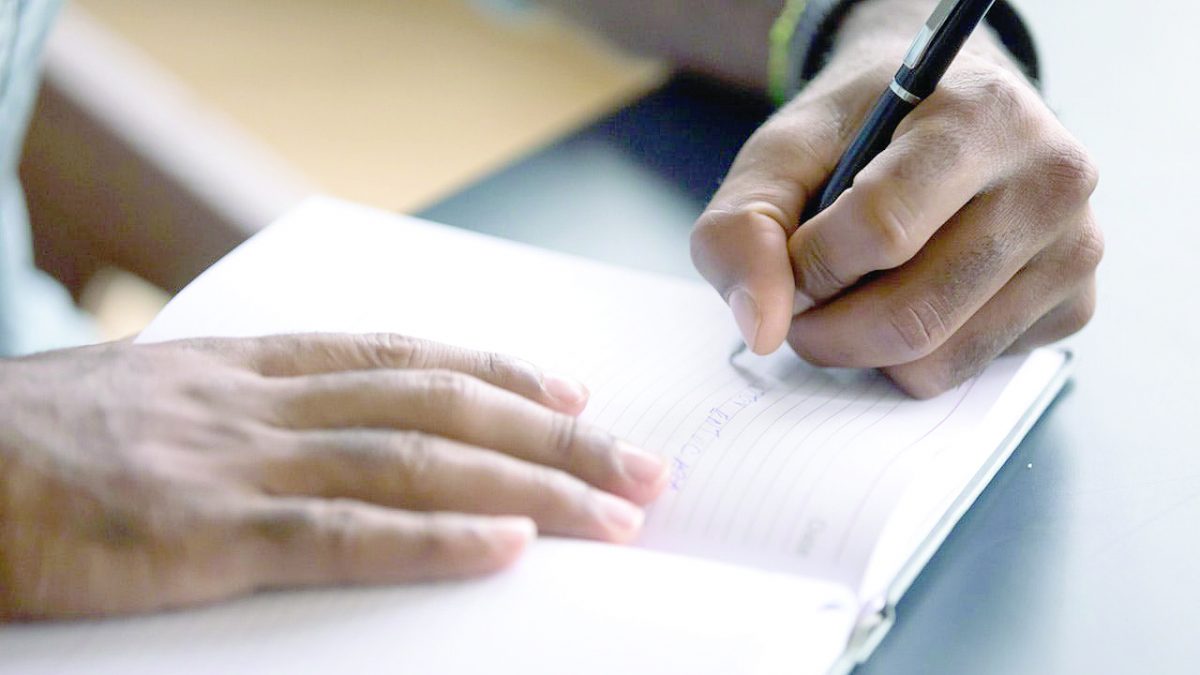Puzzle of left-handedness: Bias, struggles and benefits

With at least 10 per cent of the population being left-handed, it is true to say right-handed people dominate the world.
And with many tools designed for efficient use by right-handed people, lefties often struggle to perform basic daily tasks in a world designed for right-handers. This may be inconvenient, painful, or even dangerous for left-handed people.
The brains and bodies of lefties may operate differently than those of right-handed people (and in mixed-handed people, who may have different dominant hands for different tasks).
Ruth Wangare, a student at Nairobi Institute of Business Studies (NIBS) knows this too well. “While using a computer mouse, the struggle is real since one has to work with it as it is or force yourself to use your right hand, which is very difficult before you can finally adjust. Using scissors can quickly become an exercise in frustration. Scissors typically have blades with distinct handles, including one for the thumb—a lefty’s thumb will usually get stuck in the finger hole because they’re holding it upside-down,” she reveals.
Most things are right hand oriented: Revolving doors go counter clockwise, to favour right handed people. Car doors. Cutlery on the dinner table. The zippers on clothes open on the right side…
It is no wonder that owing to cultural and social pressures, many left-handed children were forced to write and perform other activities with their right hands, known as the ‘proper’ hand.
With August 13 being International Lefthanders Day, just why one in 10 people favour their left hand is a mystery. But research points to a complex collaboration between genes and environment. An article on the US National Library of Medicine noted that hand preferences starts developing before one is born basing on the foetus position in the womb and during early childhood, it becomes more apparent.
Researchers’ headache
Foetuses start to move their arms around nine and10 weeks. By early in the second trimester, the babies show a clear preference for sucking one thumb over the other. So, handedness is probably hardwired before birth. Still, most development experts say parents likely won’t get a good sense of their child’s dominant hand until age two or three. Many children continue to switch hands for different tasks during early childhood.
The brain has two hemispheres, the left and the right. Researchers into the brain once believed that handedness revealed which brain hemisphere was dominant. However, if this were true, it would indicate that other functions controlled by the brain should be influenced by this ‘dominance’. This doesn’t appear to be the case; for example, the speech centres tend to be located on the left side of the brain, regardless of hand preference.
Another difficulty for researchers is that handedness isn’t always cut and dried. While some people use one hand exclusively for all tasks, others tend to swap depending on the activity; for example, some people write with their left hand but open jars with their right.
“It was once believed that a right-handed person has general dominance on the right side of their body, which means their favoured foot, eye and ear are also on their right side. We now know this isn’t the case. Many people may be right-handed but, for example, always take the first step with their left foot. The more we find out about right and left-handedness and their links to brain function, the more we realise we don’t know,” noted a report by Better Health.
However, there are also some rare people who are neither purely lefties nor right handed— they lack a dominant side. They are termed as ambidextrous or mixed handed people. They make one per cent of the lefties population and this is where yours truly fall.
Some of the most famous people that represent the lefties and the ambidextrous people are: Albert Einstein, Mahatma Gandhi, Bill Gates, Mark Zuckerberg, Steve Jobs, Adam Levin, Barack Obama, Other former US leaders who were left-handed were James A. Garfield, Herbert Hoover, Gerald Ford, Ronald Reagan, George W Bush, and Bill Clinton. Our very own former president Uhuru Kenyatta is also left handed.
Slightly more boys than girls are left-handed. This suggests to some researchers that the male hormone testosterone has an influence on right and left-handedness.
Possible risks
Also, women over 40 years are more likely to give birth to left handed babies than younger mothers. According to an article in New Scientist, a UK-based journal, it may be because older women are more likely to experience difficult pregnancies. Therefore, the study concludes that left handedness increase with birth stress.
It’s also linked to a risk of mental health problems. People who are left-handed are at greater risk of psychotic disorders such as schizophrenia, according to a Yale University study. When researchers polled patients at a mental-health clinic, 40 per cent of those with schizophrenia or schizoaffective said they wrote with their left hand; that’s considerably higher than the 10 per cent of lefties found in the general population. Studies have also found links between non-right-handedness and dyslexia, attention deficit hyperactivity disorder, and some mood disorders.
Upper hand
However, lefties have the upper hand (pun intended) when it comes to one-on-one sports such as tennis, boxing, and pitching a baseball. In his book The Puzzle of Left-Handedness, linguist Rik Smits explains that athletes, (left- and right-handed) usually train against right-handed opponents. When finally facing a southpaw, lefties can easily adjust—but righties are at a double disadvantage. They’re forced to engage in an asymmetrical battle for which they’re poorly prepared, against an opponent who’s a dab hand at dealing with this type of asymmetry.
When it comes to driving, left-handers have a natural advantage according to the AA Driving School. The study found left-handed people learn to drive more quickly and successfully than right-handed drivers.
Another study found that left-handedness was a predictor of mathematical precociousness. Researchers found that the rate of left-handedness among students talented in mathematics was much greater than among the general population. Students that were left-handed outperformed the rest of the sample when the tasks involved difficult problem-solving, such as associating a mathematical function to a given set of data
Finally, lefties are said to be good at complex reasoning resulting in high number of famous lefties in careers such as musicians, artists and architects and in leadership positions. According to research published in the American Journal of psychology, lefties appear to be better at generating creative ideas and exploring many possible solutions.












